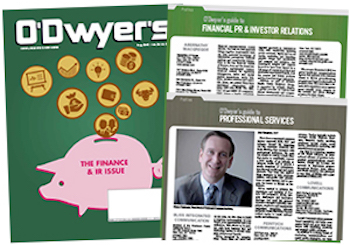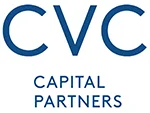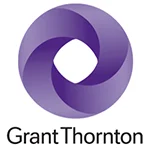 Frank Tortorici Frank Tortorici |
By all means, describe the innovations your clients are making in your best, florid prose in that pitch letter, but make sure you’re ready to list how many products the company has sold or what recent deals the company has made before you contact the media.
|
|
The media isn’t interested in a story about what could be; reporters want to know what has happened or what has been achieved. They’ll want to report these developments first, but don’t expect them to get excited about what great plans your clients have in mind.
While recently pitching a client that has developed a great technological advancement, I was struck regarding how passionate the creators were about their invention and their zeal to communicate it. While this got me excited to share the story, I wasn’t ready for the reporter reaction. While the journalists were happy to hear about it and listened attentively, no immediate stories resulted. Their editors want to know how the client’s plans have been executed and how many units were moved or services rendered. The dreams that your clients have will not turn into ink at the planning stages.
This is true in whatever industry your client is working, but some fare better than others. For instance, though technology reporters may not have filed stories right away, many asked me for my client’s opinion on other industry developments and even offered to conduct a Q&A with the CEO, delivering his answers as an industry expert. This is a kind of back-way into getting publicity for a new enterprise.
So don’t despair, just set goals right away. Tell the client you will be able to arrange Q&As and interviews and spread the word, but it is important to communicate to clients that they must be patient for achieving actual articles. PR is not instantaneous in the way an advertising media purchase is.
History is filled with stories about business executive and entrepreneurs with the greatest pedigrees and best intentions falling flat on their faces. If reporters are going to spend their increasingly diminishing time and efforts on your client’s project, they want to be reasonably sure that it has gotten off the ground and is officially out of the dreaming stages.
To convince writers that your client is the real deal, write press releases on those breathtaking initial sales and potentially explosive agreements the client has made with other business in their industries (or others). Send those releases to the leading writers in the field at top tier print and broadcast media and at industry trades. At the very least, these documents will better the company’s SEO presence, which is key in these digital times.
To establish the client in the media, be creative. Though they might ask initially for a story exclusively about their product or service, explain that it is important to establish a presence in the industry as they get the company off the ground. Read The Wall Street Journal, The New York Times and The Financial Times to ascertain the hottest issues in your industry and pitch your spokesperson as an industry expert on those topics.
For instance, if your client is an economist, make sure he or she is quoted on the Brexit in the Financial Times or Barron’s. If your client is a telecommunications specialist, try securing interviews for him or her in FierceTelecom or Wired. The media world can be your oyster, if you assess the media giants in your industry and target the right journalists.
If your client is a game app or fantasy sports gaming organization, learn who the reporters are covering Pokemon Go and ask them if they need industry peers to comment on the wild, out-of-hand popularity of the app and what it indicates about the future of the gaming industry and the likelihood that other apps could achieve this amount of phenomenal success.
Also, try getting the ear of media in your client’s native city or the state or country in which they are living and working. While The Wall Street Journal might not be ready for your client’s story because the client doesn’t have a huge account base yet, the local daily newspaper of your client’s city is very likely to be interested in how a local businessman has made good in a competitive field.
While reading this article, you’ll probably be saying to yourself that a lot of these suggested tactics will depend on the client, and you would be correct. It’s vital to establish early on in the relationship with a start-up client that participation from its leadership is essential to the success of a PR campaign.
Clients and/or their internal marketing and PR departments must be willing to offer comments and studied opinion on impactful events happening in their industries and must be available to answer queries when the media, whether it be a reporter or TV producer, wants them answered. No one is suggesting that the client be available 24/7 but if a company is interested in increasing media exposure, then its spokespeople need to meet reasonable workday deadlines of the media.
When meeting regularly with the client and assessing expectations and performance, the effective PR practitioner should counsel that big profiles focusing on the company will happen, but that patience is required. Cooperating with the media in the early stages of a start-up adds immeasurably to the chances that reporters would be willing to chart your challenges and major successes as they occur naturally with the growth of a successful company.
A critical part of a PR program for start-ups is to lay the groundwork at the beginning of a relationship, so that the media knows your client is a player in their industry and is capable of providing insightful and educated commentary on competitors and related products.
You can feel that you have accomplished your job if the right beat reporters at major publications and broadcast outlets have your CEO’s contact information in his/her electronic Rolodex. This will keep the client top-of-mind to the reporter when he’s contemplating coverage of industry innovations. These may seem like baby steps, but they are critical to securing coverage of your client’s developments as it builds on its product development success and overall company growth. It may also influence less than critical coverage in the rare but possible occasion that your client’s success takes a detour.
* * *
Frank Tortorici leads Marketing Maven’s Financial and Professional Services PR Practice.



 Teneo is handling the initial public offering of CVC Capital Partners, one of Europe’s largest private equity firms with nearly $200B in assets under management.
Teneo is handling the initial public offering of CVC Capital Partners, one of Europe’s largest private equity firms with nearly $200B in assets under management. Brunswick Group represents Endeavor Group Holdings as it agrees to go private via its acquisition by Silver Lake technology investment firm, which is handled by Edelman Smithfield.
Brunswick Group represents Endeavor Group Holdings as it agrees to go private via its acquisition by Silver Lake technology investment firm, which is handled by Edelman Smithfield. Tod Donhauser, a nine-year veteran of Edelman, has joined H/Advisors Abernathy as managing director and head of its San Francisco office.
Tod Donhauser, a nine-year veteran of Edelman, has joined H/Advisors Abernathy as managing director and head of its San Francisco office. Intelligent Group Ltd, a Hong Kong-based financial PR firm, has priced its initial public offering of 1.9M shares at $4, which is the low end of the $4 to $5 range.
Intelligent Group Ltd, a Hong Kong-based financial PR firm, has priced its initial public offering of 1.9M shares at $4, which is the low end of the $4 to $5 range. Kekst CNC represents Grant Thornton as it sells a majority stake in its US arm to New Mountain Capital, which relies on Goldin Solutions, in what is billed as the largest PE investment in the accounting and advisory sector.
Kekst CNC represents Grant Thornton as it sells a majority stake in its US arm to New Mountain Capital, which relies on Goldin Solutions, in what is billed as the largest PE investment in the accounting and advisory sector.


 Have a comment? Send it to
Have a comment? Send it to 
No comments have been submitted for this story yet.